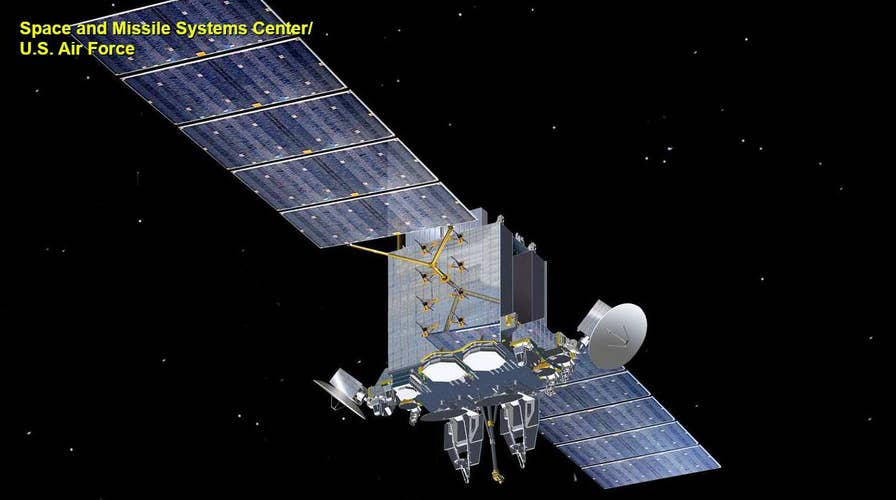New small US Air Force satellites could counter Chinese space weapons
A new generation of smaller, faster, higher-throughput satellites are being developed by the US Air Force in order to combat space weapons being developed by the Chinese. The Very Low Earth Orbit satellites are engineered to enable faster, more complete and integrated information transmission to commanders on the battlefield.
Space attacks on satellites could happen anytime China gets aggressive – and cost Americans billions.
That is what’s behind the bipartisan deal establishing the U.S. Space Force. A “space corps” was almost a joke 18 months ago. Then the White House got serious about the threat. “I’ve seen things that you don’t even want to see,” President Trump said after a space threat briefing back in 2018.
With a big push from Trump and Vice President Mike Pence, the U.S. Space Force is a go, approved by Congress and signed into law by the president on Friday night.
Twenty-six thousand men and women of Air Force Space Command are now the United States Space Force. They fly over 76 vital satellites. “The Space Force will help us deter aggression and control the ultimate high ground,” Trump said Friday night.
CLICK HERE TO GET THE OPINION NEWSLETTER
Why create a U.S. Space Force now? Space has changed in the last decade. China, Russia and others can attack U.S. space forces, and ruin your life.
If China attacks U.S. satellites, down goes the space network that handles everything from Google maps to gas pumps to banking. And the U.S. could be blind to incoming missile attacks on our military forces overseas and yes, even at home.
More from Opinion
But surely space satellites are safe, thousands of miles up? Nope. Space is the new front line of the struggle for national security.
The first shots in the next war will be fired in space, says Secretary of Defense Mark Esper. China’s number one threat to the U.S. is space attack, Gen. David Goldfein, chief of staff of the Air Force, said at the Reagan Forum Dec. 7.
The scary fact is satellites are soft targets. Just look at them. Bunch of tin cans, foil and solar panels. Consider several ways China – for example – can attack U.S. space forces.
Kinetic Kill. Think bumper cars in space. An “accidental” bump by China’s satellite can wreck a U.S. satellite. Satellites go fast, about 17,000 mph in low earth orbit. That’s a lot of bump on impact.
Radio Jamming. Radio signals – like interference on your phone – can fuzz up the links satellites use to transmit their data and get instructions. Jam the uplinks, jam the downlinks. Also, some satellites use radar to take pictures through clouds, and China is working on disrupting that, too.
Lasers. Laser light beamed from a hostile satellite can blind a satellite’s delicate optical lenses, or fry them permanently. China also has a “death ray” or ground-based laser to zap sensors on satellites in low earth orbit. China is working on lasers powerful enough to burn holes in satellites and threaten higher orbits home to navigation satellites, and the vital missile warning satellites that 24/7 monitor trouble spots such as North Korea and Russia.
Many concerns remain. The U.S. Space Force is technology-intensive and will need more money, soon, for current and growing missions.
Chemical Sprayers. Basically, like spray paint on the satellite’s camera lens, solar panels, etc.
Robot Arms. They unfold from a satellite to pick up space junk debris or to snap antennas off U.S. satellites.
High-power microwave. It’s known that high-power microwave bursts can disable electronic circuits. China can do that in space, too. Again, it’s one satellite zapping another.
Cyber. Ground station links are vulnerable if their networks aren’t watertight. China could use its cyberwarfare against U.S. space-based assets, says the Defense Intelligence Agency. Spoofing, malware, command intrusion, the list goes on.
A lot of these technologies aren’t new. What’s changed is the accelerated capability and the utter dependence of Americans on space.
That’s the reason for the U.S. Space Force.
Of course, as with anything hatched by the Pentagon, there’s a catch. Space Force phase one doesn’t cover the reconnaissance or “spy” satellites of the intelligence community, although all the actual satellite operations are tightly integrated by one command center in California.
Somehow, the Army and Navy space assets wiggled out, and the Army is already sniffing around for ways to set up its own satellite network for missile targeting.
Many concerns remain. The U.S. Space Force is technology-intensive and will need more money, soon, for current and growing missions. Congress wants a report in March on how to buy satellites faster and better.
U.S. Space Force must also help Americans understand their mission. It isn’t about space aliens, Luke Skywalker, Star Trek or “the Borg,” the villain human-robot species expert in technology and controlled by a collective “hive mind.” Although that does sound a bit like China …
CLICK HERE TO GET THE FOX NEWS APP
The Space Force mission is protecting America’s economy, military – and our way of life.
Now for the first victory. President Vladimir Putin of Russia warned he’s “seriously concerned” about the U.S. and NATO in the space domain – so, in my opinion, freaking out Putin is already a win for the U.S. Space Force.

